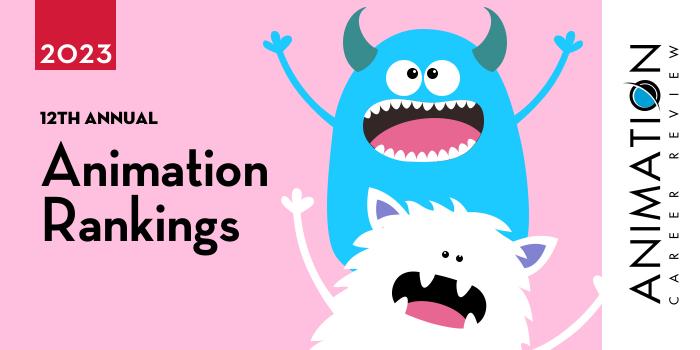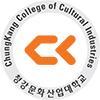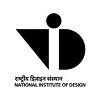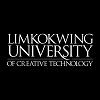
Master 3D modeling for film and video games in under 2 years with CG Spectrum. Get personalized career training online from leading 3D artists from major studios, plus career support and access to a vibrant community. Learn more.

| Ranking | School | Country |
|---|---|---|
| 1 | Beijing Film Academy | China |
| 2 | Nanyang Technological University | Singapore |
| 3 | Bezalel Academy of Arts and Design | Israel |
| 4 | ChungKang College of Cultural Industries | South Korea |
| 5 | National Institute of Design | India |
| 6 | Tokyo Animation College | Japan |
| 7 | City University of Hong Kong | Hong Kong |
| 8 | Limkokwing University of Creative Technology | Malaysia |
| 9 | Jilin Animation Institute | China |
| 10 | Hongik University | South Korea |
For this ranking we only consider formal degree programs (bachelor's degree or equivalent). For an explanation of our ranking criteria, click here.

Beijing Film Academy (BFA) is China’s only film academy and the largest film school in Asia. Within BFA is an Animation School that launched in January 2000 with one Animation Major. When it opened, the Animation School at BFA was the first academic unit of its kind in China. Today, The Animation School serves approximately 360 students enrolled in Programs leading to a BA, MFA or PhD.
The undergraduate program explores the Art of Animation, Computer Animation, Game Design, and Comics. The MFA explores Film and Design Art. Research areas include Animation Product Design, Stop-Motion Film, Anime Planning, and Game Design. The Animation PhD highlights research in Animation Theory.
Students in all Beijing Film Academy programs benefit from interdisciplinary studies; participation in exchange workshops with the Korean Academy of Film Art (KAFA) or the Netherland Film Academy (NFA); long-term cooperative relationships with the major studios in China and abroad; and the opportunity to participate in the student film festival known as Cinerent Award.
Beijing Film Academy also provides opportunities to collaborate on projects with Massachusetts Institute of Technology (MIT), Gobelins, Straight Entertainment (Hollywood, CA), and Taylor’s University, among others.
Graduates of the Animation Programs at Beijing Film Academy go on to establish careers in all areas of Animation, Film, Gaming, Television, and Visual Effects (VFX). Program alumni are Animators, Directors, Educators, Researchers, Designers, Filmmakers, and VFX Artists. Graduates have worked on productions that have won awards at the Berlin International Film Festival, Venice Film Festival, Cannes Film Festival, the Tokyo International Film Festival, and the Shanghai International Film Festival.
Established in 1950 as the Performance Art Institution of the Film Bureau of the Ministry of Culture, Beijing Film Academy opened with just 38 students. Today, BFA serves approximately 4,000 students across 15 departments and schools. The school provides undergraduate, graduate, PhD, and short-term training programs. Around 72% of students are enrolled in four Majors including Film Directing, Cinematography, Performing Arts, and Chinese Language. Beijing Film Academy is recognized by the Beijing Municipal Commission of Education

The College of Humanities, Arts, and Social Sciences (CoHASS) at Nanyang Technological University, Singapore (NTU Singapore) houses the School of Art, Design and Media (ADM), which provides a variety of interdisciplinary programs taught in a collaborative environment. ADM students also benefit from experiential learning activities such as fieldwork, a 10-week internship, and study abroad experiences.
Within NTU Singapore’s School of ADM is a Media Art Program that combines Digital Animation, Games, Digital Filmmaking, and Photography. Leading to a BFA, the Media Art Program allows students to choose a Specialization such as Digital Animation or Digital Filmmaking, a second Major, or one of 20 Minors offered across the CoHASS. Examples of second Majors include Communication Studies, Theater and Drama, and Art History. Minor examples include Film, Design and Systems Thinking, and Art History.
Course examples for the BFA Program include 3D Character Animation, Graphic Storytelling, Issues in Animation Practice, Digital Compositing, Cinematic Concepts and Motion Capture Applications, Writing for Animation, Lighting and Rendering Pipeline, Advanced Stop Motion, Visual Effects I-II, Game Design, Film Editing, 3D Production, Storyboarding & Production Design, and Rigging for Animation.
The Media Art BFA Program at Nanyang Technological University, Singapore culminates with the Final Year Project (FYP), worth nine academic units (AUs).
Graduates of the Media Art BFA Program at Nanyang Technological University are prepared to pursue careers in Animation, Game Art and Design, Film, Advertising, and VFX. Some graduates go on to pursue an advanced degree such as the Art, Design and Media MA (ADM MA) at Nanyang, Singapore. The School also has an ADM PhD Program.
Both options are customizable, allowing students to tailor the curriculum to suit their interests. In addition, ADM has six specific Graduate Research Areas. Options include Audiovisual Art; Visual Art and Digital Humanities; Art, Design and Media Histories and Criticism; Design Studies; Southeast Asian Art, Design, and Media; and Cultural Identity and Heritage.
The Audiovisual Art Area is ideal for Animators. This Area surveys the practical and theoretical facets of Film, Character Animation, Sound Art, Motion Graphics, Real-Time 3D Storytelling, Art Installation, Stop-Motion, VR Film, Data Visualizations, Motion Capture, and Experimental Filmmaking.
Graduates of the ADM MA and PhD Programs at Nanyang Technological University, Singapore are prepared for faculty positions, research careers, and advanced positions in all areas of Animation, Film and Television, Advertising, Sound Design, Games, and more.
Nanyang Technological University, Singapore traces its roots back to 1981, when Nanyang Technological Institute was established as a teaching university on the grounds of Nanyang University. Nanyang, Singapore was officially established in 1991. Today, the school serves 33,000 students, making it the second largest public university in Singapore. Nanyang Technological University, Singapore provides hundreds of programs at all degree levels across four colleges that house 14 schools.

Bezalel Academy of Arts and Design (Bezalel) houses the Department of Screen-Based Arts, which provides programs that explore Traditional Animation, 3D Animation, Stop Motion, Experimental Filmmaking, Video Art, Augmented and Virtual Reality (AR/VR), and Documentary Filmmaking. Department features include access to state-of-the art facilities and equipment; workshops; study abroad experiences; Guest Lecturers; internship opportunities; and portfolio development courses.
The Animation Program at Bezalel Academy of Arts and Design explores Animation, Video, and Filmmaking. Course examples include 3D Character Animation, Animative Thought, 3D Animation – Body Mechanics, Character Design & Storyboard, Drawing in Motion, MAYA and Photoshop, Art Direction for Classic Animation, Illustration, After Effect – Animation, Compositing, Animation Software, Forming Strip Sound, 3D Animation Directing, Art Direction for Stop Motion, Film Editing, and Experimental Animation.
Leading to a BFA in Animation, the Program culminates with the Final Animation Project. Graduates work in Animation Production, Film and Television, Advertising, Games, and many others. Some program alumni have launched their own studios, while others have started their own freelance businesses. Graduates have also won more than a dozen awards for work on a number of productions.
Bezalel Academy of Arts and Design (Bezalel) was officially established in 1906. Serving 2,500 students, the school houses 14 departments that provide programs at the Bachelor’s and Master’s levels. With small class sizes and more than 300 elective courses, Bezalel Academy of Arts and Design has collaborative agreements with 215 academic institutions around the world.

The School of Animation at ChungKang College of Cultural Industries (ChungKang) has an Animation Program that consists of three years of college coursework, followed by one year of intensive training in the Animation Major. During the first three years, the program trains up to 180 students.
The curriculum for the program is studio- and project-based, workshop intensive, and multidisciplinary, allowing students to study Animation, Cartooning, and Game Design. The curriculum also explores Planning, Directing, and Post-Production.
Course examples for the program include 12 Basic Principles of Animation, 3D Modeling & <aping Techniques for Problem-Solving, Basic Graphic Film, Digital Animation Techniques, 3D Character Animation Production, Match Move Compositing, Understanding Film, Visual Storytelling, Animation Directing, CFX Simulation, Visual Development, 3D Rigging, and 3D Human Modeling. Intensive workshops include 2D Animation Production I-II, 3D Modeling, and 3D Animation.
Other program features for the Animation Program at ChungKang include access to state-of-the-facilities, including the largest animation studio in Korea; a sound recording studio and a render farm; courses taught by industry professionals; a tutoring program; opportunities to gain experience through mandatory local and international internships; independent study opportunities; and portfolio development.
Upon completion of the three-year program at ChungKang College of Cultural Studies, students move on to the final year (1-year intensive program), which consists of just 50 students. During this time, advanced Animation students will develop their Thesis Project and Presentation to earn their Animation BA. Graduates are prepared to pursue positions in Animation, Film, Games, Television, Advertising, and other areas that require advanced skills and experience in Animation.
ChungKang College of Cultural Industries opened in 1996 as South Korea’s first post-secondary institution with a primary focus on the cultural industries. Today, ChungKang provides programs ranging from Animation to Early Childhood Education. Programs are housed across the Schools of Manhwa Contents, Game, Culinary Arts, Animation, Fashion & Beauty Style, Convergence, Performing Arts, and Mobile IT, and the Department of Early Childhood Education.

National Institute of Design (NID) houses the Animation Film Design Lab where students study Animation in state-of-the-art classrooms and studios. This production hub allows students, faculty members, and industry professionals to work together to brainstorm and bring their creations to life. The Lab is equipped with technology and production tools such as Wacom Cintiq, sound systems, Dragonframe, HP Workstations, TVPaint Animation, Toon Boom Pencil Check Pro, and other industry-standard software.
Specific programs for Animation students include the BDes and MDes with an Animation Film Design Option. Part of the NID Faculty of Communication Design, both programs feature small class sizes of no more than 19 students; project-based courses; case studies and other interactive sessions; field trips and other experiential learning opportunities; workshops; membership in the NID Film Club; and access learning opportunities at more than 55 overseas partner institutions.
Students will also have opportunities to show their work at the Student International Animation Festival Chitrakatha. This Biennial event attracts national and international animators.
National Institute of Design recently launched a Design PhD that allows students to complete research and creative works in areas such as Digital Media and Film. Students in the Design PhD Program have the same opportunities and access to resources as students in the BDes and MDes Programs.
The BDes Program may be completed in four years at the Ahmedabad campus. The MDes takes 2.5 years to complete and is available at all National Institute of Design campuses. The Design PhD can be completed in four to six years at the school’s maim campus.
Graduates of the BDes, MDes, and PhD Programs at National Institute of Design are Animators, Filmmakers, Character Designers, Storyboard Artists, Producers, Creative Directors, and Consultants at major studios and companies such as Nickelodeon, MTV, Cartoon Network, Infosys, Tata Interactive, and Cognizant.
Program alumni have also gone on to launch their own studios or become educators at NID and other universities around the world.
National Institute of Design was established in 1961 as the National Institute of Industrial Design. The school serves hundreds of students enrolled in more than 30 Bachelor’s Master’s and PhD programs across the Industrial, Communication, Textile and IT Integrated (Experiential) Design disciplines. Comprising three campuses, NID is has been declared an ‘Institution of National Importance’ by the Act of Parliament, by virtue of the National Institute of Design Act 2014. The school is also recognized by the Department of Scientific and Industrial Research-Government of India as a Scientific and Industrial Research Organization.

Tokyo Animation College is equipped with an Animation Lab, Comic Lab, Archive Rooms, and a Voiceover Studio for students enrolled in the school’s 13 programs. Options are housed across four departments and include Anime Production (three years), Animator/Animation (two years), Comics (three years), Story Comic (two years), and Character Design (two years).
Students in all programs have access to state-of-the-art facilities such as an Animation, Manga, Illustration, and Voice Acting practice rooms; drawing, computer, and training rooms; vocal, recording, and post-recording studios; and free spaces.
The Character Design Program at Tokyo Animation College provides opportunities to study animation through courses such as Flash Anime, Production Development, 3D Design, and Advanced Flash Anime. However, the most popular options for animators are the Anime Production and Animator/Animation Programs.
The three-year Anime Production Program explores TV Animation, 3D Animation Art, Theatre Animation Production, 3DCG, and Web Animation. Course examples for the program include Advanced Flash Anime, Character Design, Directing Techniques, Color Design, Digital Filming/Editing, Advanced 3DCG, Background Arts, Advanced Sketching I-IV, Business, and Anime Production I-II. Anime Production students will complete the Graduation Production I-II courses leading to a full-length animated production.
Graduates of the Anime Program at Tokyo Animation College are prepared to pursue positions such as Animator, Flash Animator, Technical Director, Animation Director, Cartoonist, Producer, CG Director, Film Director, and Production Controller.
The two-year Animator/Animation Program begins with basic skills such as Sketching, Motion and Drawing. Students will move on to mastering Animation Production Processes such as Color/Filming Editorial Techniques and Background Art.
Graduates of the Animation Program at Tokyo Animation College are prepared for careers such as Key-Animator, Character Designer, Production Assistant, Digital Cell-Painter, Animation Supervisor, and Inbetweener.
Tokyo Animation College traces its roots back to 1979, when the Music School was founded. In 1984, the school became a specialized training institution authorized by the Tokyo Metropolitan Government. In addition to production facilities, Tokyo Animation College houses dorms, libraries and other reference centers, and a career center.

The School of Creative Media (SCM) at City University of Hong Kong (CityU) has a Creative Media (CM) Program with options leading to a BA, BSc, MA, MFA or PhD in Creative Media, a BAS in New Media, or a Joint Degree with Leuphana University (LU) (CityU BACM or BAS + LU Digital Media BA). A Creative Media Minor is also available.
Students in all programs have the opportunity to study Animation, Games, Cinema, or New Media through required courses, free electives, and elective clusters such as Animation, Interaction, Game & Playable Media, Media Worlding, and Cinema & Photography. Course examples for Animators include Procedural Animation, Abstract and Experimental Animation, Digital Composition, Web Animation, Computer Programming for Animators, 3D Contents Production in Maya, World-Building in Digital Narrative Media, Character Animation, Computer Animation for Interactive Content, Physical Computing and Tangible Media, and Creative Media Studio.
Features across programs include the opportunity to work and learn in a studio environment; participation in a semester-long exchange program with one of more than 160 partner institutions; professional internships; and the option to complete a month-long summer overseas study program in Animation.
Depending on the program, CityU SCM students will complete a Graduation Project or Graduation Project/Thesis. Graduates of the Creative Media Programs at City University of Hong Kong are prepared to pursue positions in Animation, Media Art, Film, Screenwriting, Television, Video Production, Internet and Multimedia Design, Exhibit Design, Advertising, and Art Education.
City University of Hong Kong was established in 1984. This research university serves more than 18,000 students enrolled in hundreds of programs across 10 colleges and schools, and 29 academic departments. City University of Hong Kong has also established the Hong Kong Institute for Advanced Study (HKIAS), 23 Research Institutes/Centers, and 10 Applied Strategic Development Centers.

The Faculty of Multimedia Creativity at Limkokwing University of Creative Technology (Limkokwing University) has two paths to study Animation including an Animation & Multimedia Design Diploma and the Animation BA.
The Diploma Program explores Emerging, Experimental, and Advanced Digital Animation Techniques. Course examples include History of Animation, Illustration, Animation Methodology, Design Studies, Animation Production Design, Computer Graphics, Analytical Drawing and Communication Studies. Students in this program will also complete a final project across two courses.
Graduates of the Animation & Multimedia Design Program at Limkokwing University are prepared for careers such as 2D Animator, Concept Artist, Character Designer, Visual Development Artist, Assistant Animator, Background & Layout Artist, Storyboard Artist, and Digital Ink and Paint Artist.
The Animation BA Program at Limkokwing University explores Classical Animation, Animation History, Scriptwriting, Storytelling, Industry Software, Video and Special Effects (SFX), and the Animation Production Pipeline. Animation BA students will complete hands-on projects and coursework in a professional studio-like environment, while gaining real-world skills through the internship program.
Course examples for the program include Animation Practice 1-4, History of Animation, 3D Environment & FX, Video Production, 3D Animation 3, Multimedia Imaging, 3D Modeling, and Animation Project Management. Animation BA students will also take Professional Studies and Entrepreneurship courses. The Animation BA Program at Limkokwing University culminates with an Animation Dissertation and Final Project completed across two courses.
Graduates of the Animation BA Program at Limkokwing University of Creative Technology graduates are prepared for careers such as Animator, 3D Animator, Character Animator, Animation Supervisor, 3D Modeler, Texture Artist, and Digital Matte Artist.
Limkokwing University of Creative Technology was established in 1991 under the name Limkokwing Institute of Creative Technology. Serving more than 30,000 students from over 165 countries, Limkokwing University has 13 campuses in Botswana, the UK, Namibia, Sri Lanka, Lesotho, Cambodia, Indonesia, Malaysia, eSwatini, Nigeria, Sierra Leone, and Uganda. This private university provides hundreds of accredited diploma, degree, and postgraduate programs across seven faculties, Limkokwing Sound & Music Design Academy, and the Limkokwing Post-Graduate Center (PBC).

Jilin Animation Institute (JAI) has an Animation Direction Program that leads to a BA. Students may take courses such as Character Design, Visual Communication, Storyboard Design, Drawing, Color and Media, Layout, Animation Project Management, Programming, Post-Production, 3D Design, Principles and Timing, Web Design, and History of Animation.
Other program features include access to state-of-the-art studios, classrooms, and facilities; workshops; the opportunity to complete several Animated films; and experiential learning opportunities such as internships and study abroad experiences.
The Animation Direction Program at Jilin Animation Institute can be completed in four years, full-time. Graduates are prepared for careers in Animation, Film & Television, and Games, among others.
Established in June 2000, Jilin Animation Institute is a private, undergraduate college approved by the Ministry of Education. Serving 12,000 students, the JAI provides 36 Majors across 14 schools/academies including Animation Arts; Manga; Games; Design and Product; Film; Film Technology; Virtual Reality; Cultural Industry Business; Animation Industry; Civil Aviation; Innovation and Entrepreneurship; Marxism; General Education; and International Exchange.

The College of Design and Arts at Hongik University was established in 1991. Within the College are the Schools of Design and Media; Games; Advertising and Public Relations; and Management and Technology. The College also houses the Department of Sport Science.
Within the School of Design and Media is a four-year Animation BFA Program that explores traditional and emerging techniques in Animation, Film, and Video. Program features include immersive studios; workshops and seminar; and unique elective options such as Cartoon Graphic Narrative, Video Media Startup, Doll Making, and Video Advertisement Production.
Course examples for the program include Visual Storytelling, Hybrid Video Production, Animation Movement and Expression, Video Directing, 3D Animation Production, Video Editing, Short Film Production, and Storyboard and Layout.
The Animation BFA Program at Hongik University culminates with the Video Animation Graduation Project, which takes two academic years to complete.
For students interested in a graduate program, Hongik University has a Digital Animation Program that provides access to state-of-the-art facilities and equipment such as a sound recording studio; Quantel eQ editing workstations; Avid, Final Cut Pro, and Premiere editing systems; and HD cameras and equipment.
Housed in the Graduate School of Film and Digital Media (GSFDM) and leading to an MFA, the Digital Animation Program consists of four semesters of coursework and a full semester of thesis writing. MFA students will also complete a number of workshops and seminars. Course examples for the program include Image Semiotics, Experimental Video and Animation, Video and Production, Animation Planning and Directing, Understanding Color, Character Animation, Lighting and Camera, and Korean Cinema Theory.
The Digital Animation MFA Program at Hongik University culminates with the Final Graduate Video Animation Project.
Hongik University was established as Hong-Moon Higher Educational Institute in Yongsan-gu in 1946. The school was renamed Hongik University in 1947. Today, Hongik University serves approximately 18,400 students enrolled in hundreds of programs across 10 colleges, 12 schools, and 24 departments. Hongik graduates have gone on to become successful Animators, Filmmakers, Writers, Rappers, Actors, Illustrators, Journalists, Television Personalities, and Painters, Poets, and Performers.